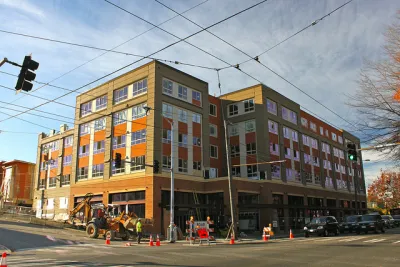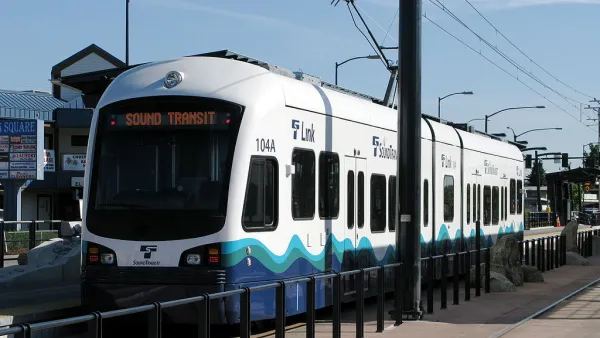As excitement builds around Seattle's voter-approved transit expansion plan, the REDI Fund will preserve space for low and middle-income residents in new transit-oriented developments.

Following the passage of Seattle's Proposition 1 in November, opportunities for transit-oriented development abound. So does private money and the potential for a glut of luxury housing. Far in advance of the transit, Oscar Perry Abello writes, "luxury developers — who typically have easier access to cash — buy up lots and buildings, which can lead to rising rents and displacement of longtime residents."
To help nonprofit and affordable housing developers compete, "Seattle joined with public and private partners from the region and beyond [...] to launch the Regional Equitable Development Initiative (REDI) Fund, a $21 million revolving loan fund to provide early low-cost financing for acquisition of transit-accessible property to build housing for low-income, working families."
Housing advocacy nonprofit Enterprise Community Partners designed the fund, providing $6.5 million toward its initial capital. The REDI Fund mandates that properties acquired with its financing will at minimum "build or preserve a share of homes affordable to households under 80 percent area median income (AMI), and 25 percent of the homes built or preserved using the fund will be affordable to households under 50 percent AMI. (In 2015, Seattle's AMI was $89,600.)"
FULL STORY: Seattle Starts $21M Loan Fund to Promote Affordable Housing Near Transit

National Parks Layoffs Will Cause Communities to Lose Billions
Thousands of essential park workers were laid off this week, just before the busy spring break season.

Retro-silient?: America’s First “Eco-burb,” The Woodlands Turns 50
A master-planned community north of Houston offers lessons on green infrastructure and resilient design, but falls short of its founder’s lofty affordability and walkability goals.

Delivering for America Plan Will Downgrade Mail Service in at Least 49.5 Percent of Zip Codes
Republican and Democrat lawmakers criticize the plan for its disproportionate negative impact on rural communities.

Test News Post 1
This is a summary

Test News Headline 46
Test for the image on the front page.

Balancing Bombs and Butterflies: How the National Guard Protects a Rare Species
The National Guard at Fort Indiantown Gap uses GIS technology and land management strategies to balance military training with conservation efforts, ensuring the survival of the rare eastern regal fritillary butterfly.
Urban Design for Planners 1: Software Tools
This six-course series explores essential urban design concepts using open source software and equips planners with the tools they need to participate fully in the urban design process.
Planning for Universal Design
Learn the tools for implementing Universal Design in planning regulations.
EMC Planning Group, Inc.
Planetizen
Planetizen
Mpact (formerly Rail~Volution)
Great Falls Development Authority, Inc.
HUDs Office of Policy Development and Research
NYU Wagner Graduate School of Public Service





























